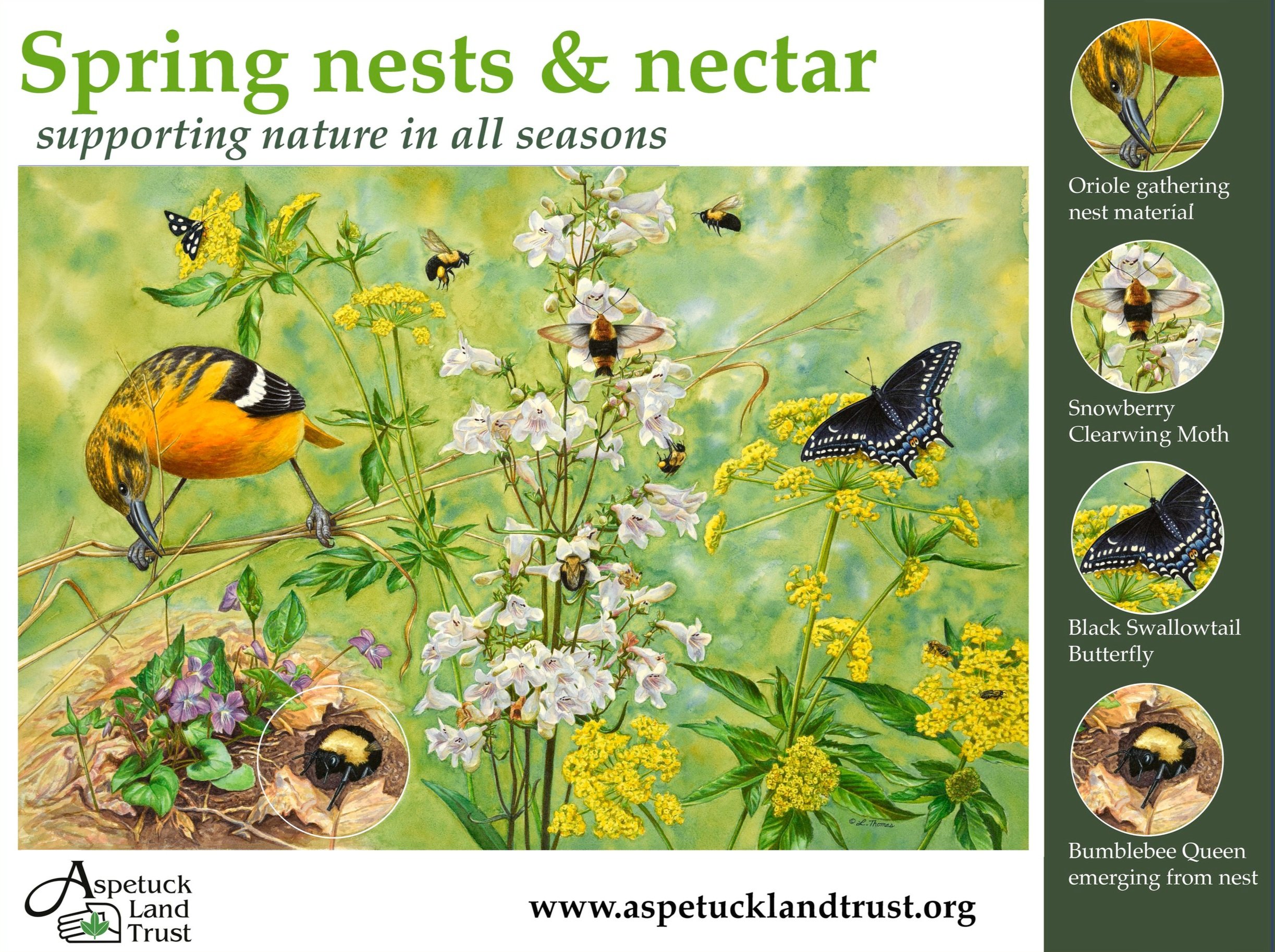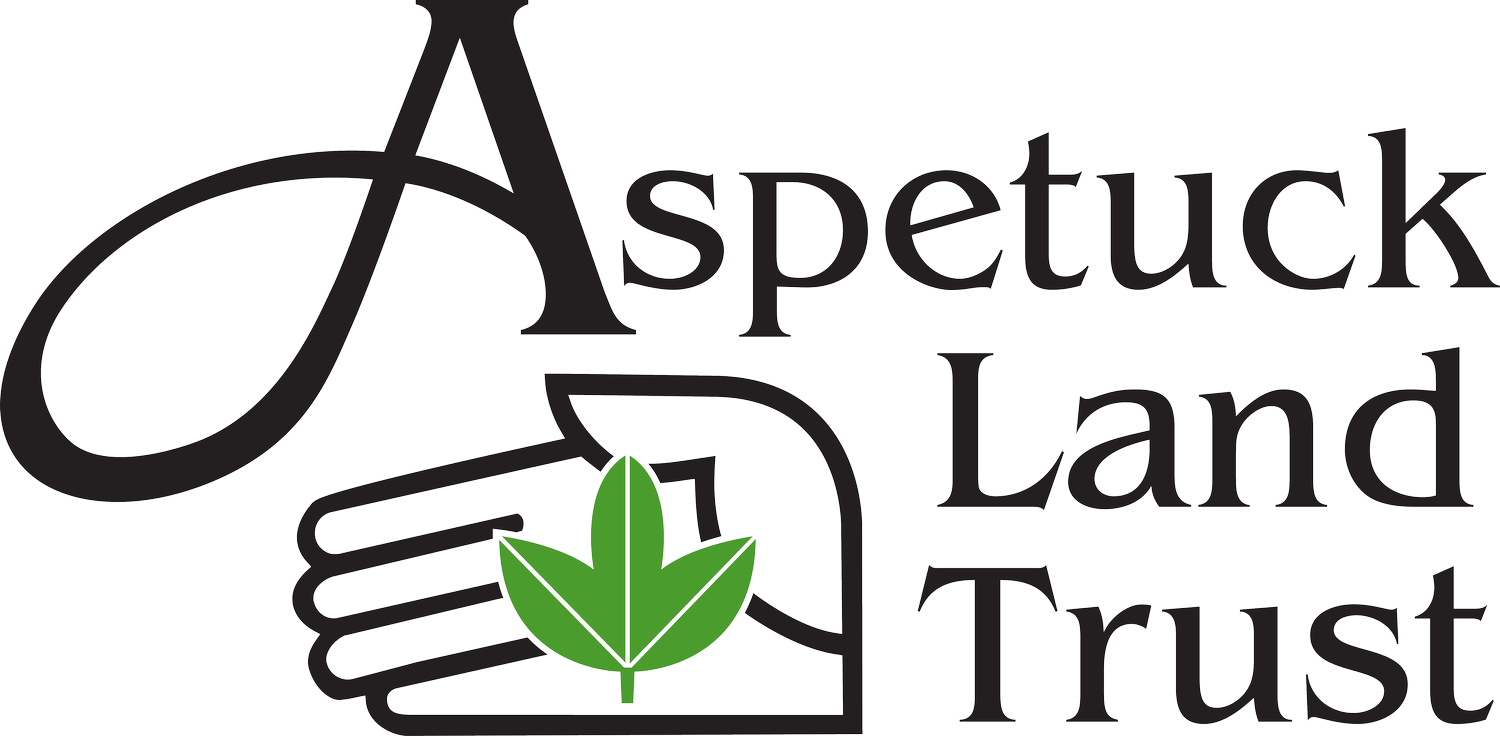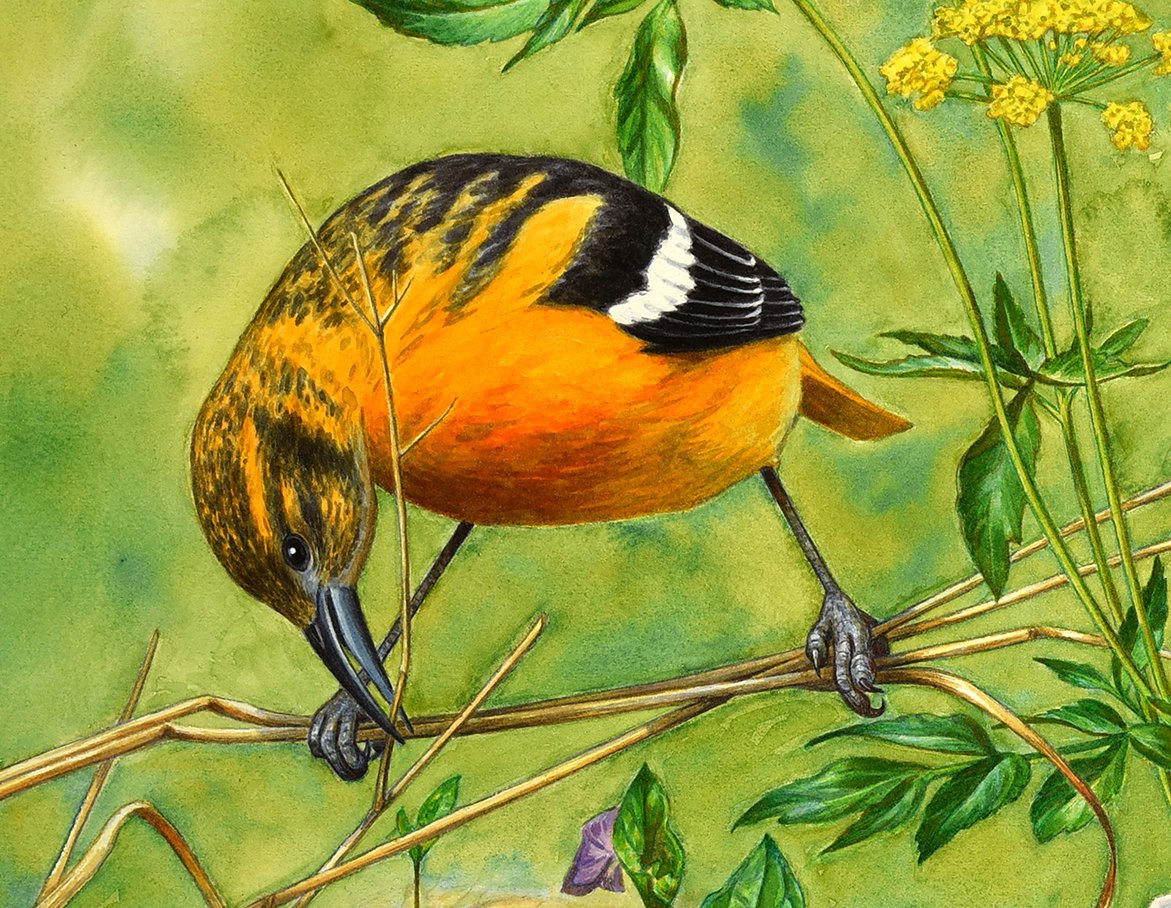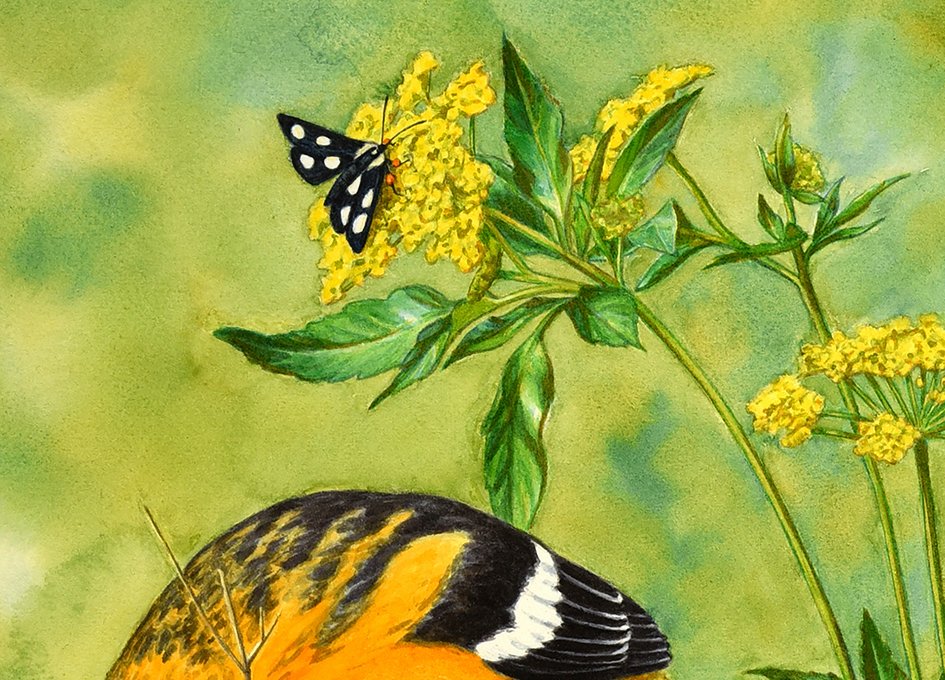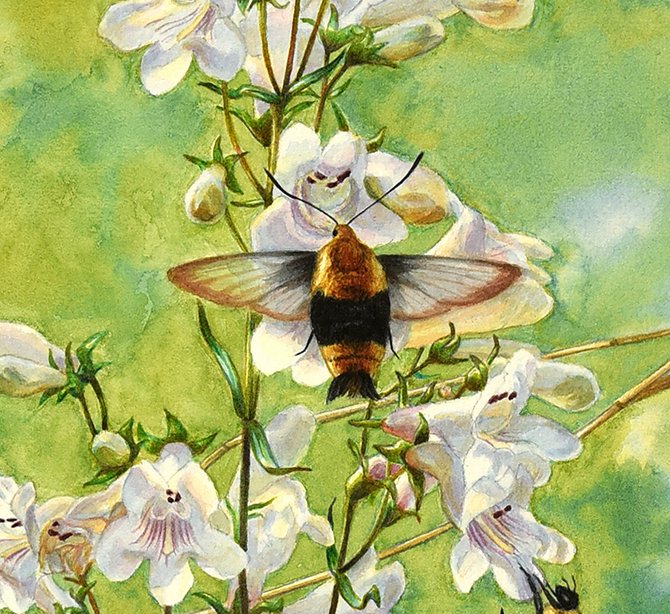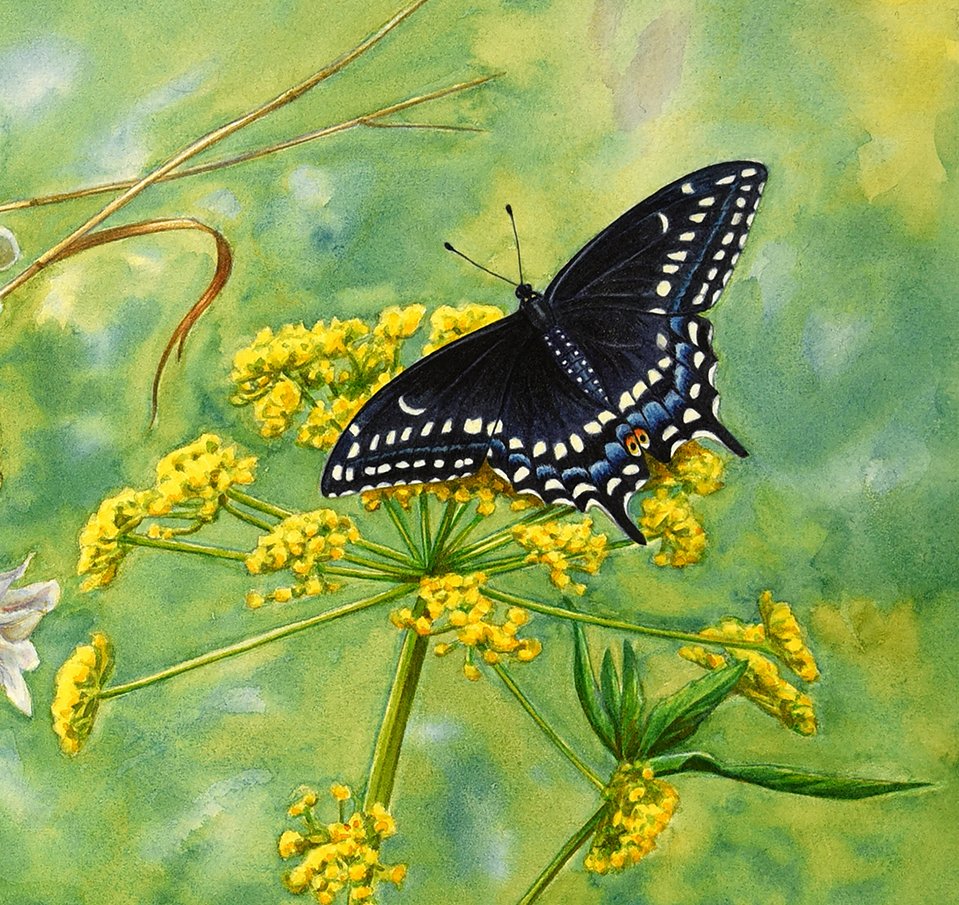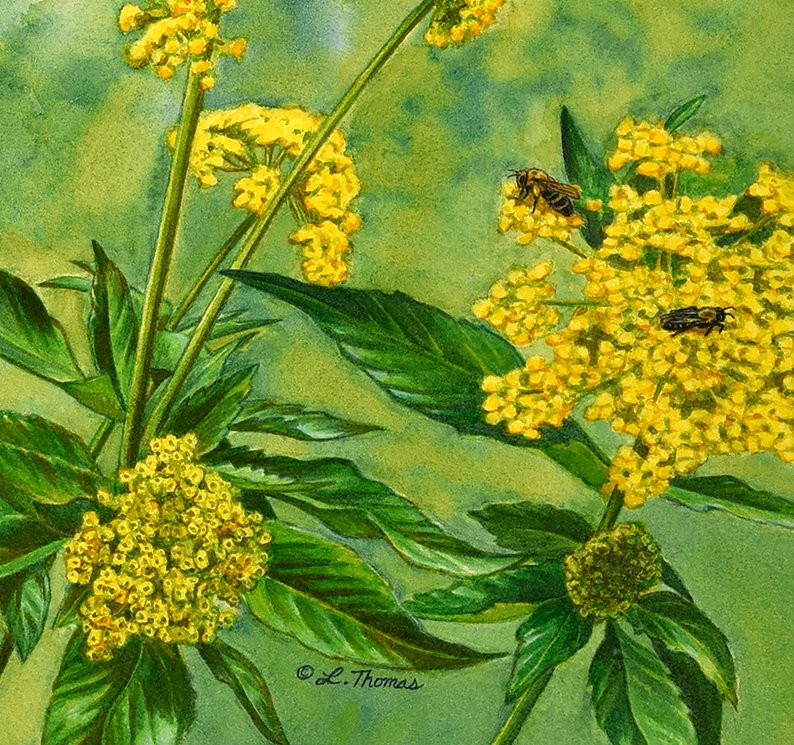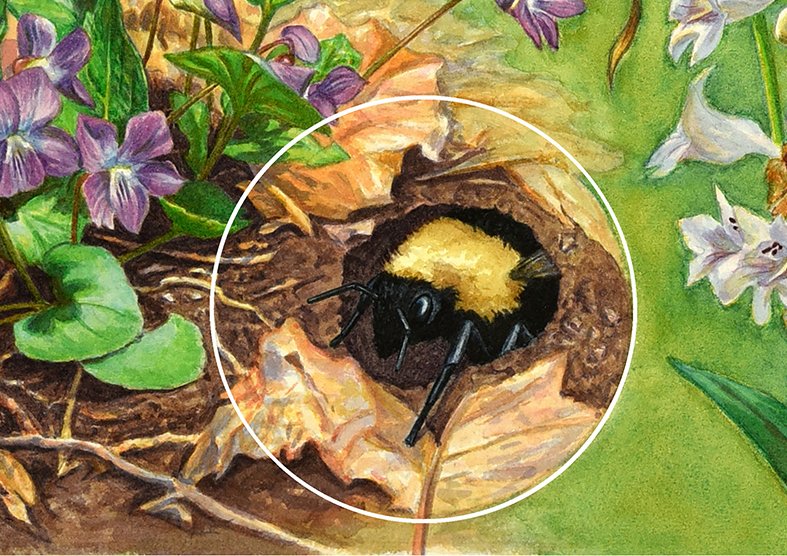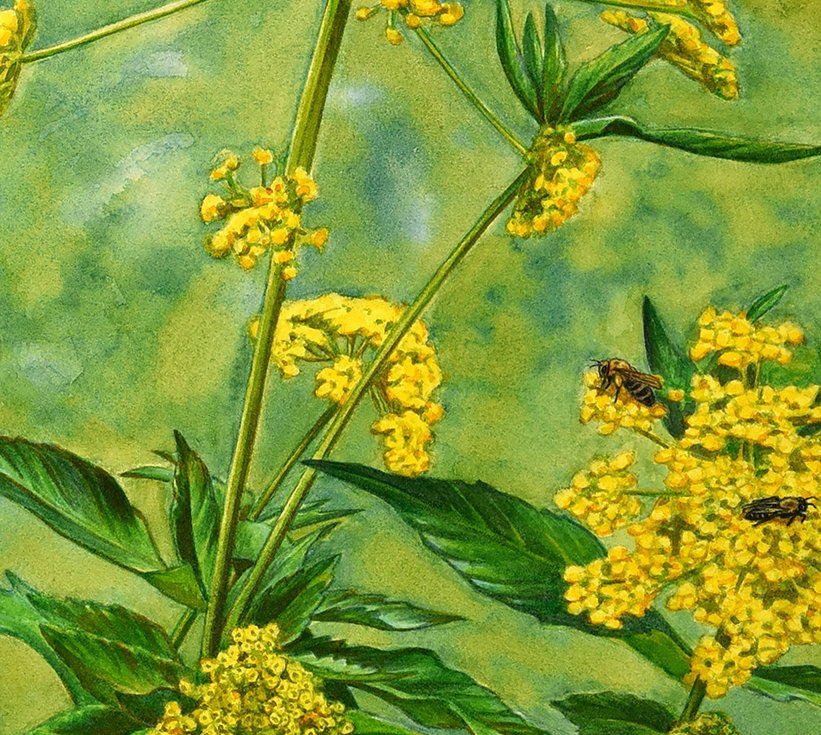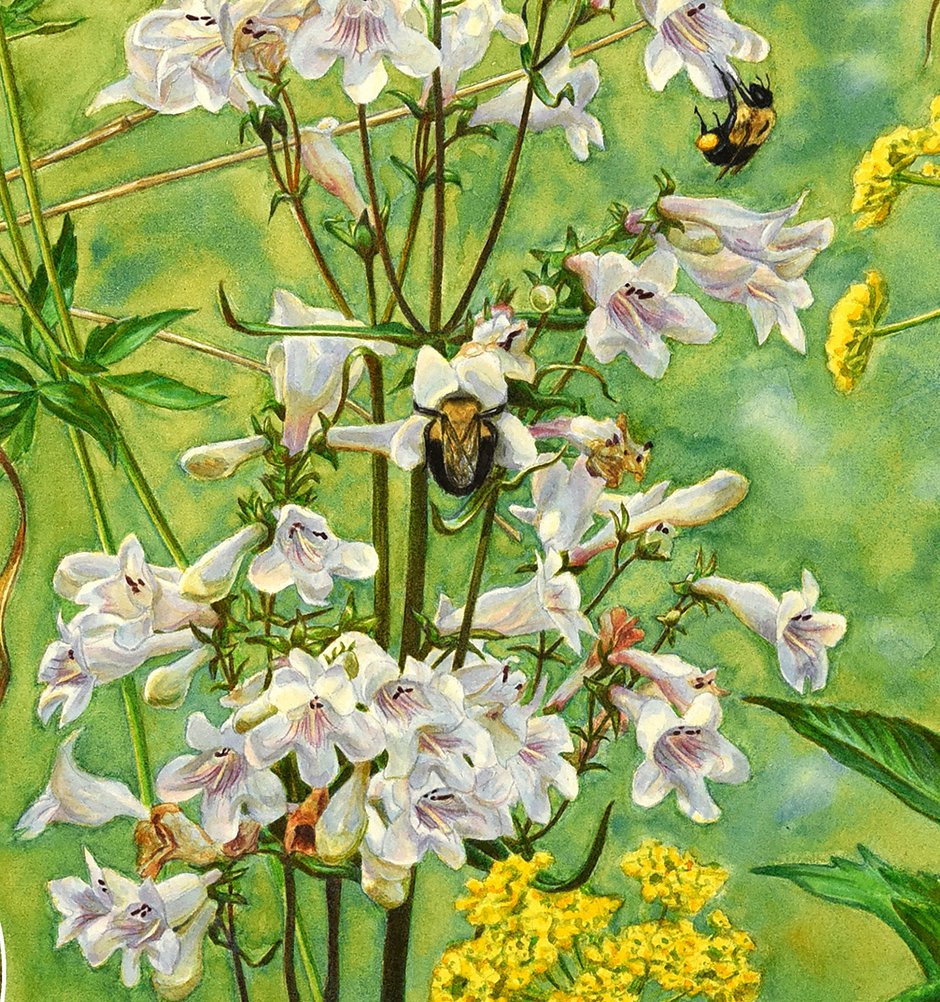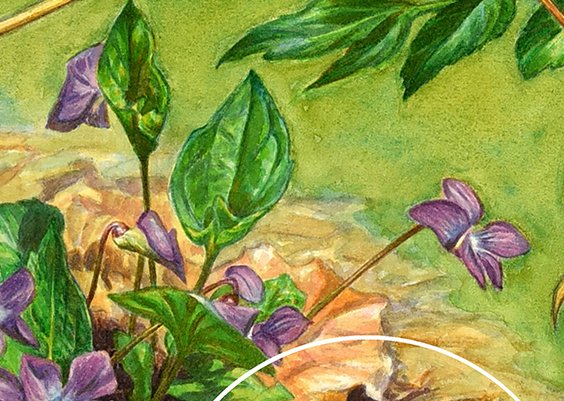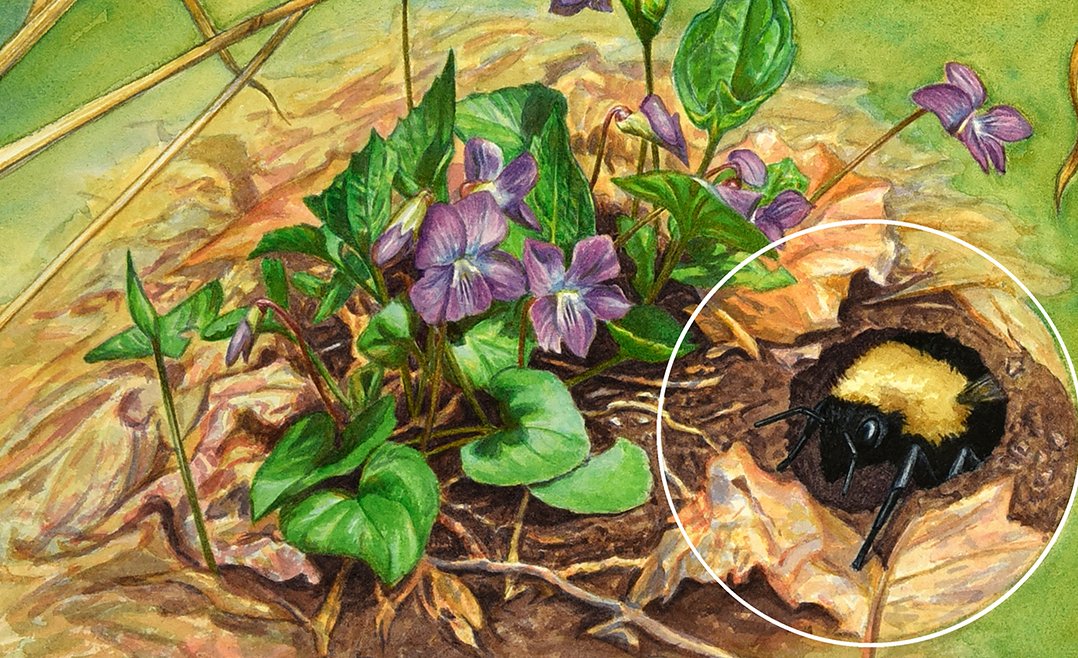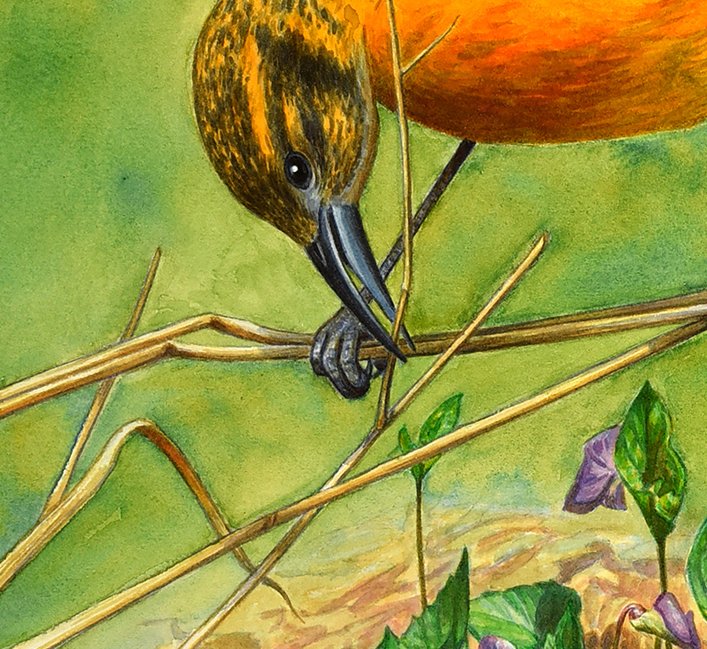Spring Nests & Nectar
We’ve all heard the line “April showers bring May flowers” because timing is everything in the spring! Early-blooming flowers like blue violet and Golden Alexanders provide nectar as insect life cycles are just beginning.

Icterus galbula | The female oriole weaves a bag-shaped nest with materials including plant fibers, pieces of bark, hair, plant down, and mosses. She attaches this nest to the branch of a tall deciduous tree.
Alypia octomaculata | Found at the borders of wooded and open areas, the moth could easily be mistaken for a butterfly because it flies during the day and feeds on flower nectar. Open areas provide food, while wooded areas provide habitat.
Hemaris diffinis | A bumble bee look-alike, Hemaris can hover in the air while searching for nectar. They emerge from cocoons in early spring, unrolling their long tongues to visit flowers like beardtongue and honeysuckle.
Papilio polyxenes | Swallowtail caterpillars feed on plants in the parsley family, including Golden Alexander— which poses as its poisonous cousin the wild parsnip to avoid deer browsing. The adult butterfly can visit Zizia, among other plants, for nectar.
Adrena sp. | Mining bees are picky eaters, visiting only certain species to collect pollen for their developing larvae. Dr. Doug Tallamy encourages us to plant the natives like Zizia aurea that meet the requirements of these insect “specialists.”
Bombus sp. | A mated queen bee burrows an inch or two into the earth at the end of summer, sheltering in leaf litter. In the spring, she emerges from hibernation and seeks pollen and nectar to support the colony’s growth. Does this inspire you to “leave the leaves” in your yard this fall? Supporting species is a year-round affair.
Zizia aurea | This is a plant that supports many kind of pollinators: small beneficial wasps, flies, native bees, and of course the black swallowtail butterfly. Andrena ziziae is just one native bee species that visits in early spring when other nectar sources can be scarce.
Penstemon digitalis | The flower reminds us of a “beard” because of the hairs that push visiting bees deeper into the “tongue” of the flower. Also notice the pink lines to guide pollinators.
Echinacea purpurea | Purple coneflower doubles as a host plant for the silvery checkerspot butterfly and a source of seeds for birds like the Baltimore oriole. We often forget there are so many important roles of plants besides nectar.
Viola sororia | Violets thrive in early spring, under moist conditions. But don’t overlook these small plants as just groundcover or even mislabelled weeds: they support a specialist mining bee, Adrena violae.
Panicum virgatum | A key species in the tallgrass prairie, switchgrass can be used to create “pocket prairies,” form clumps of sod, or even re-seed meadows here in Connecticut. It provides nesting material for birds and is deer resistant.
